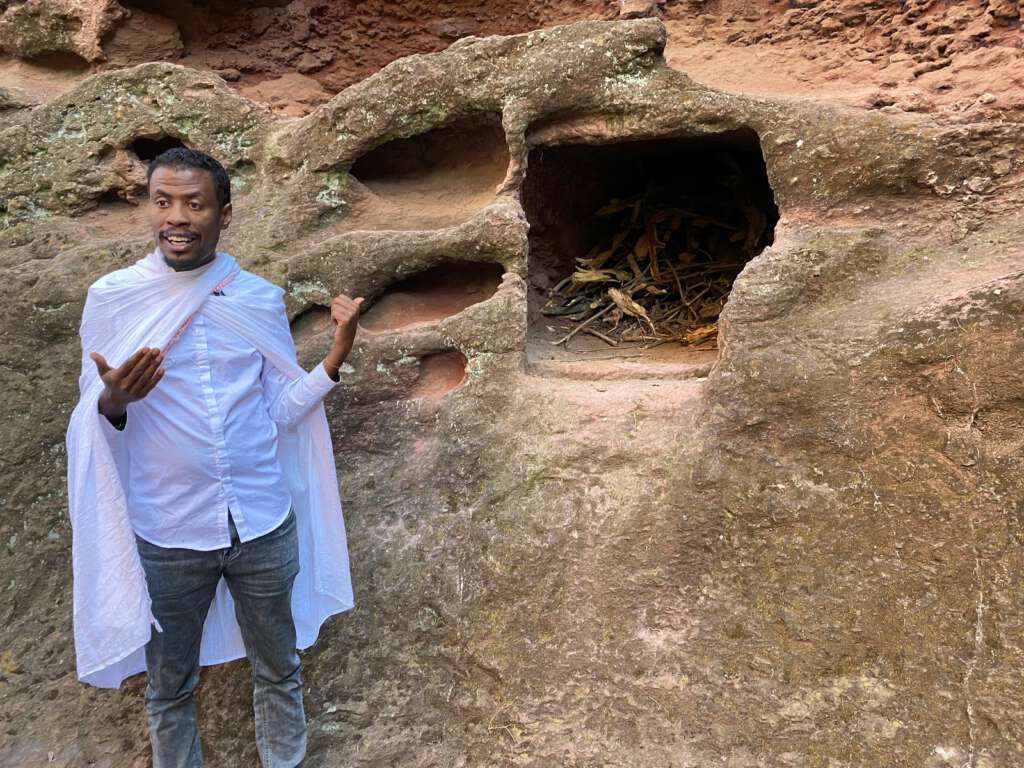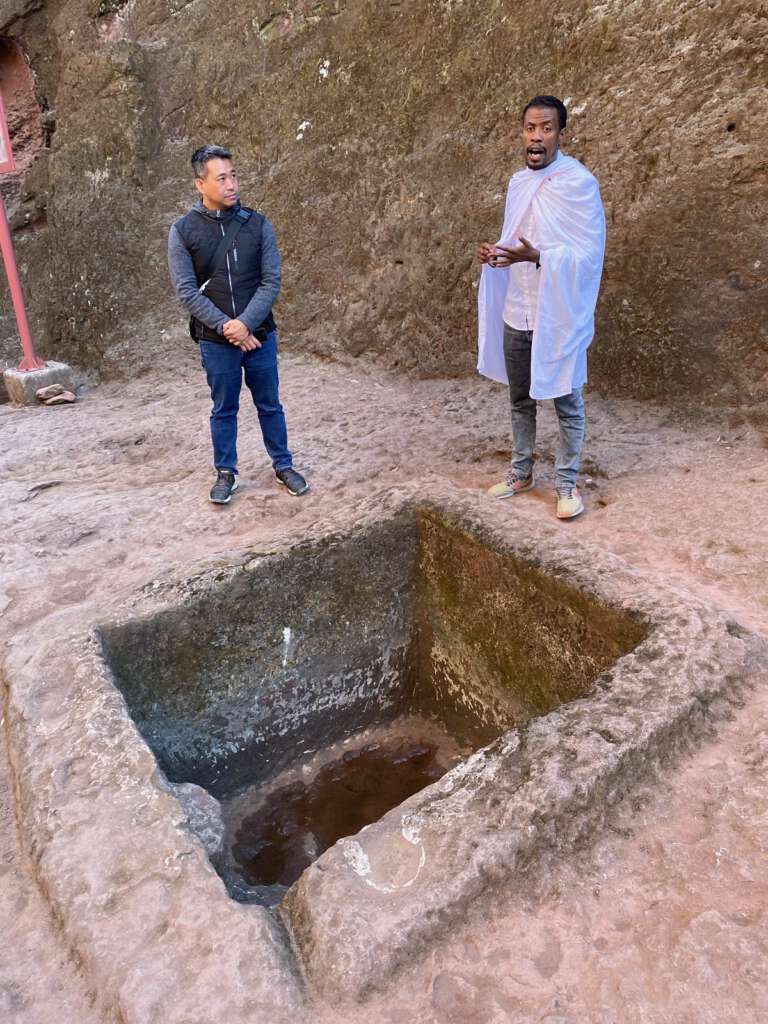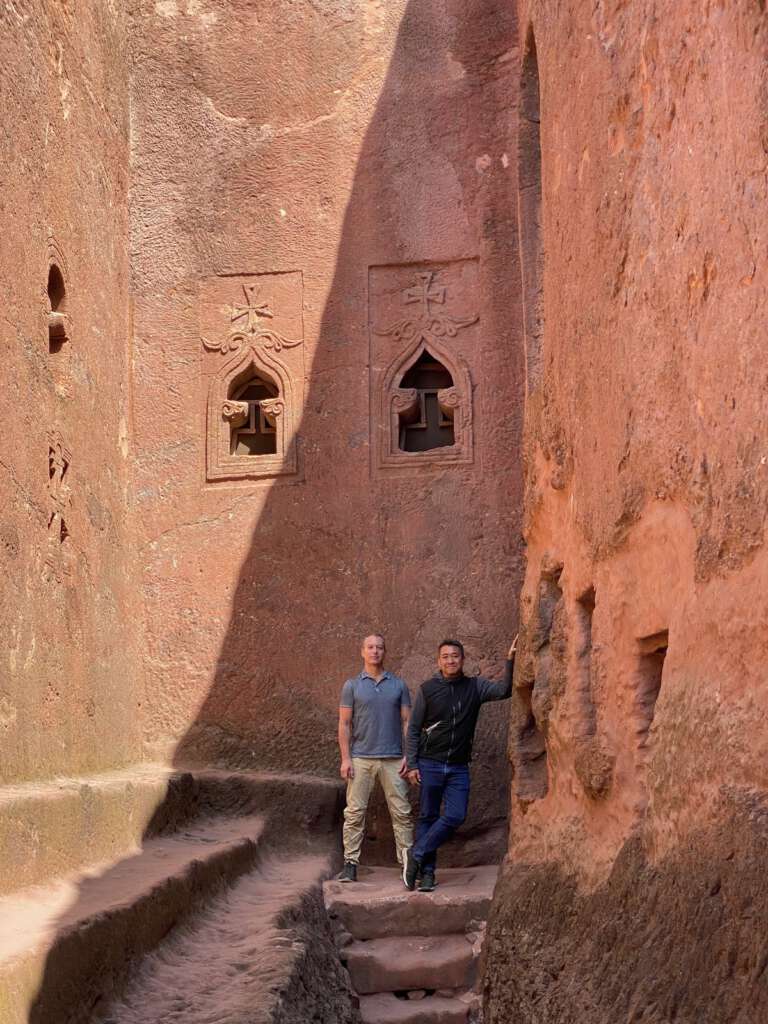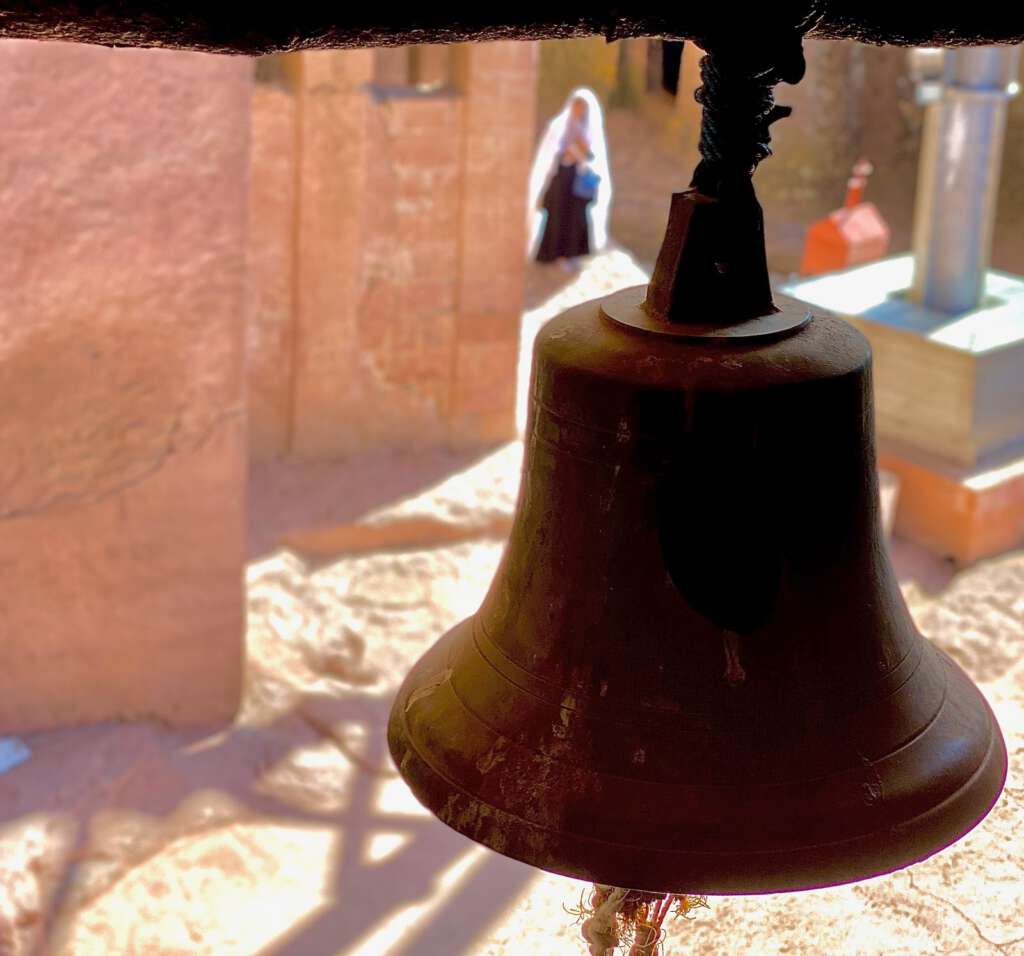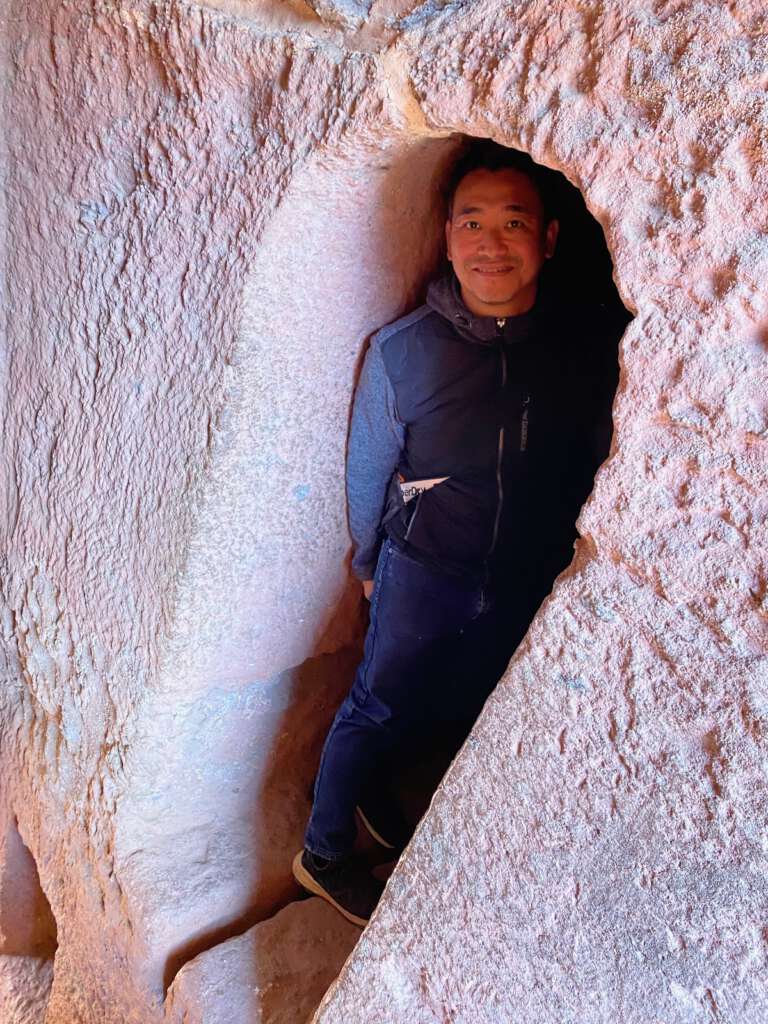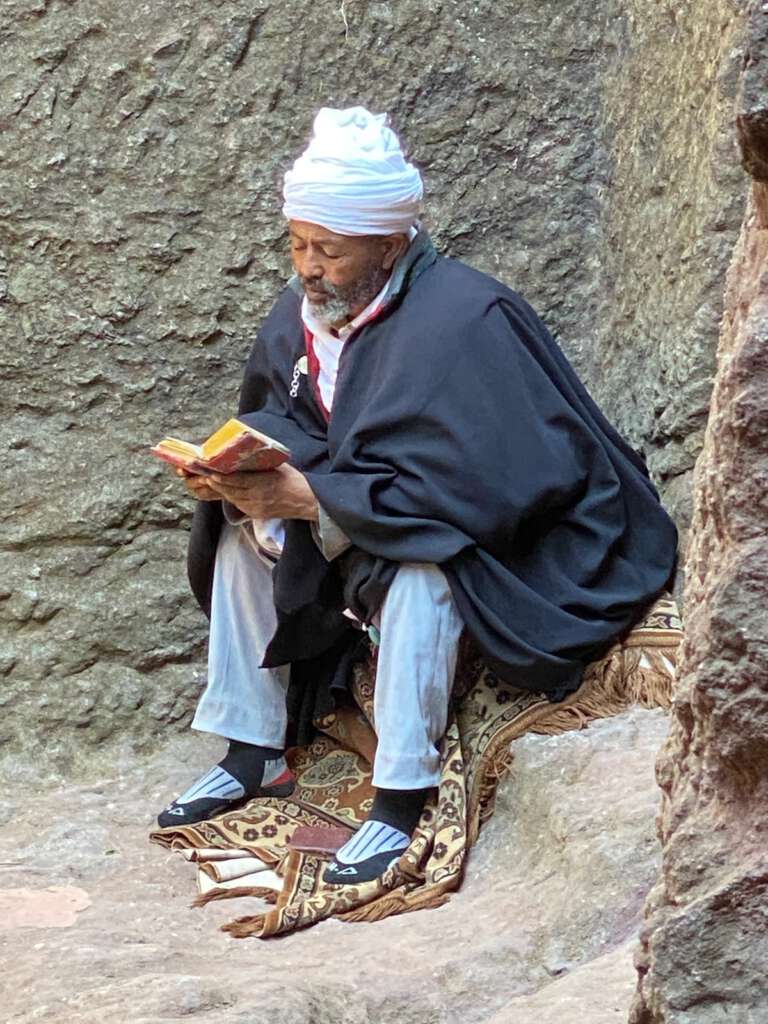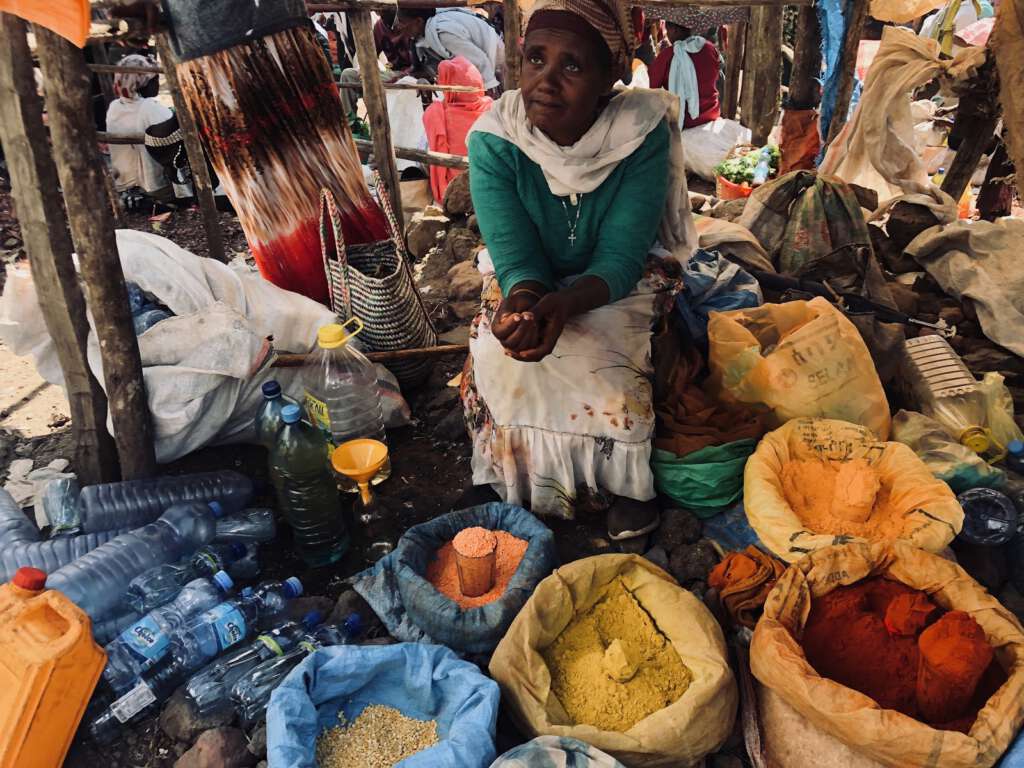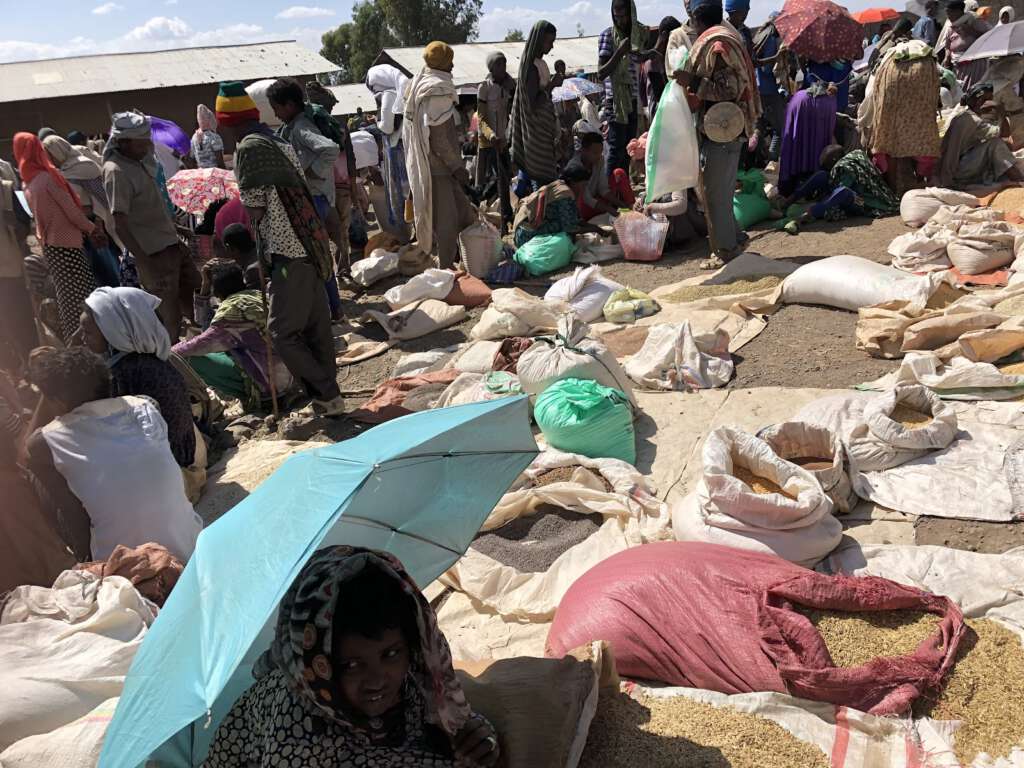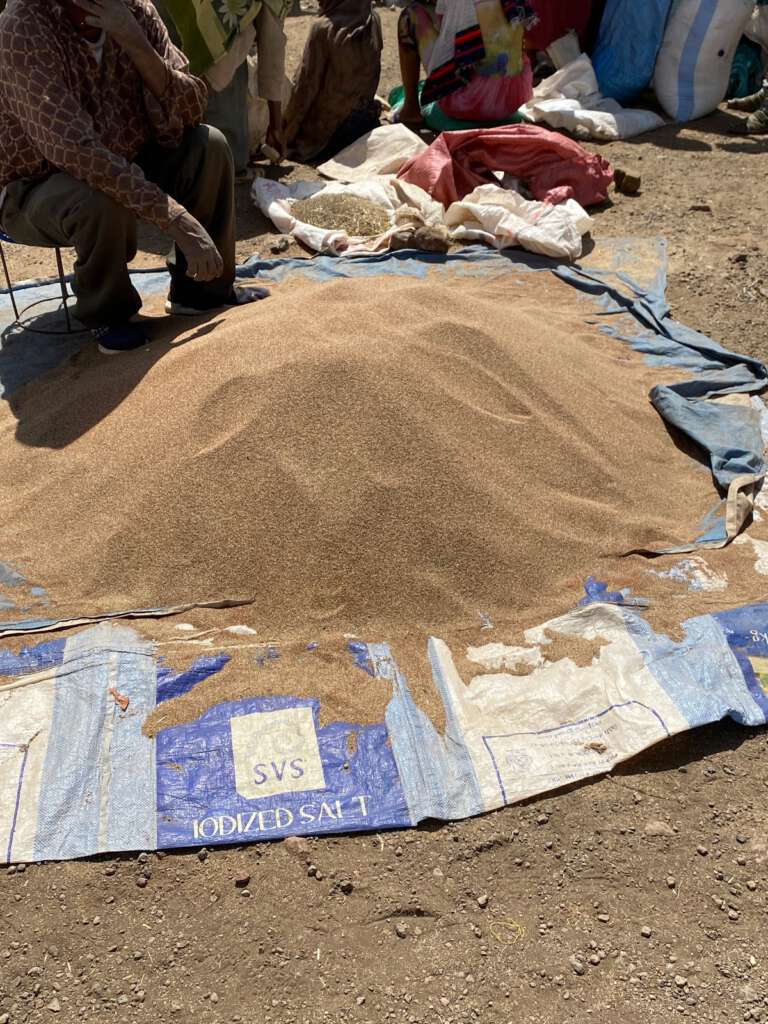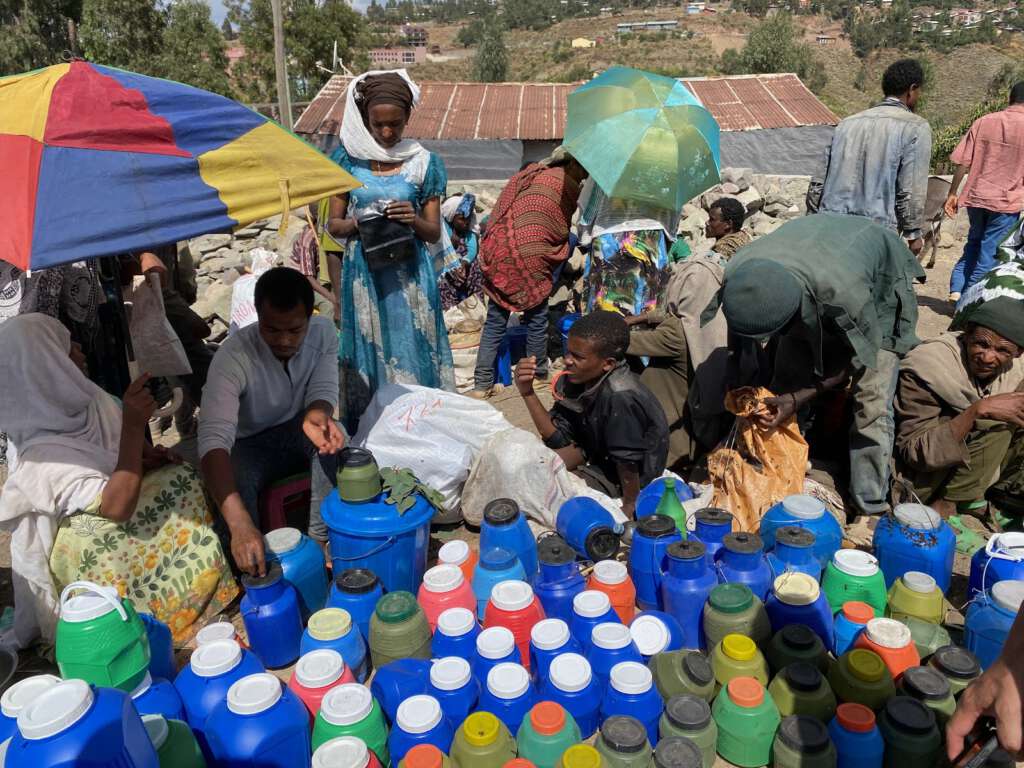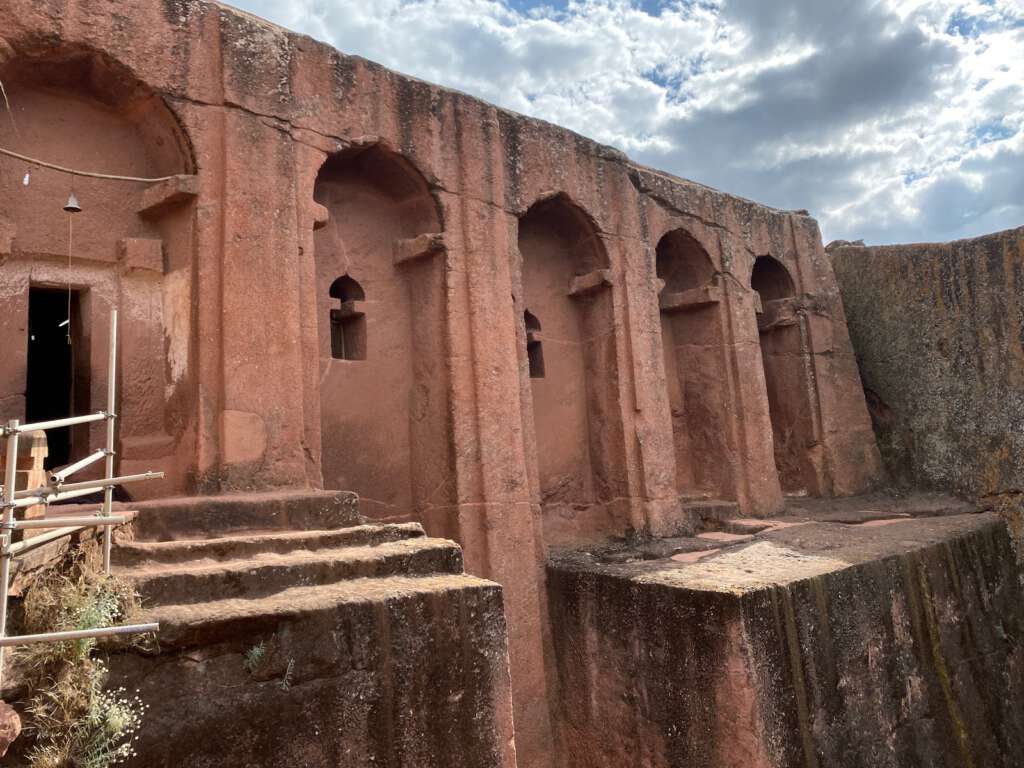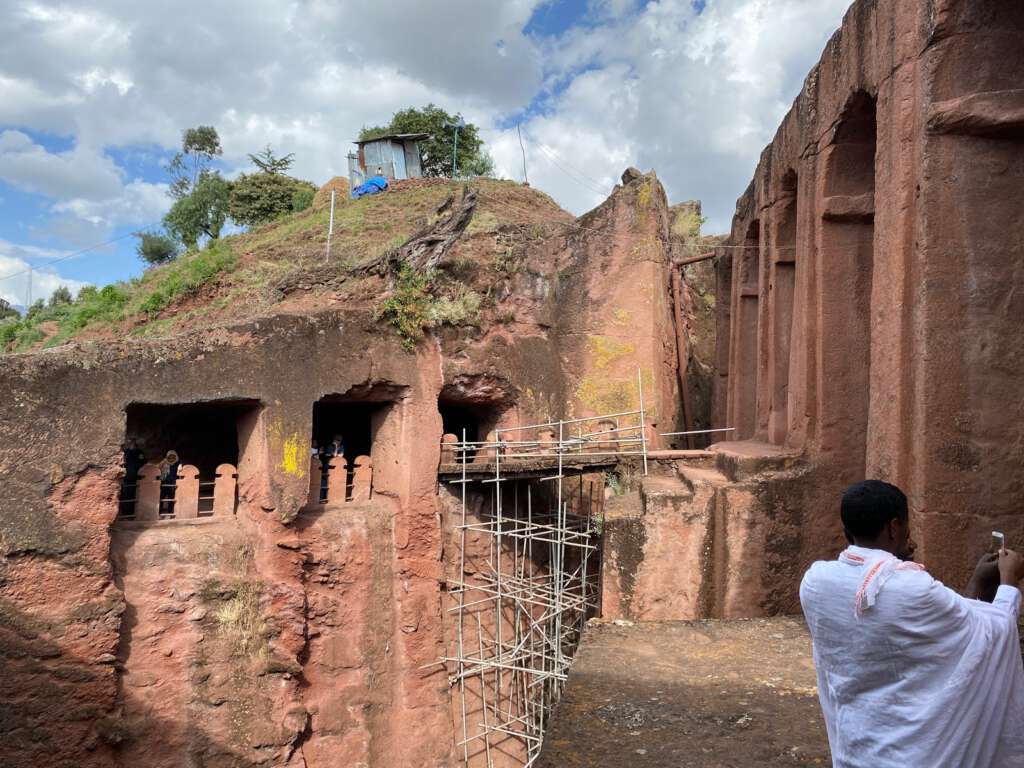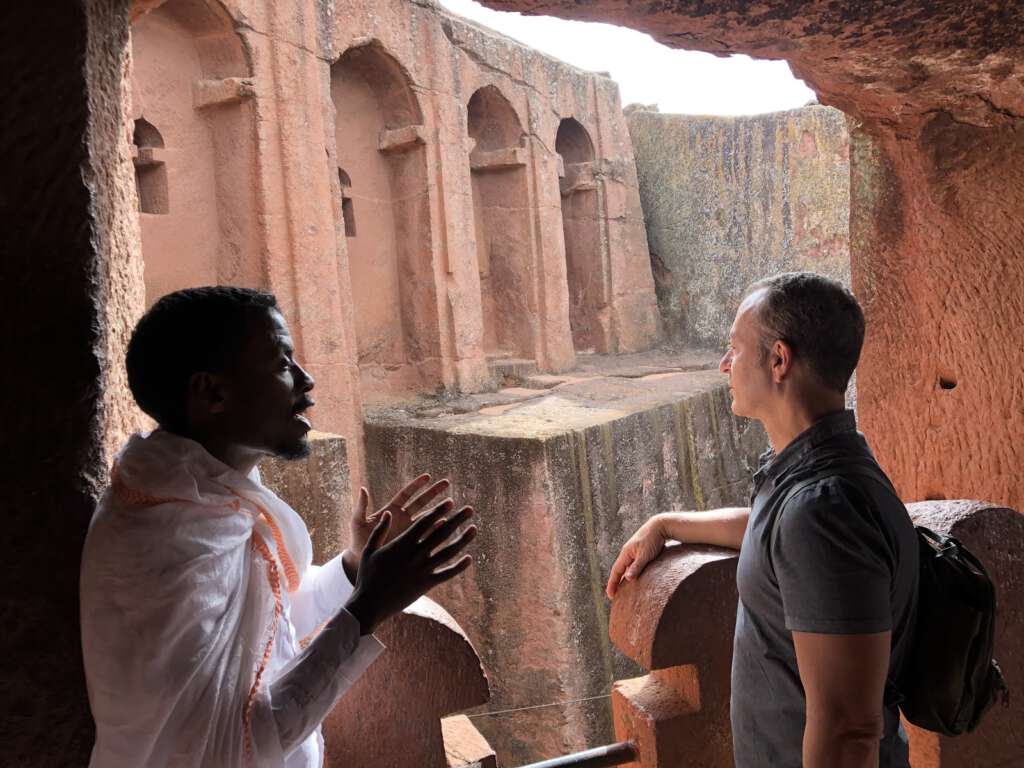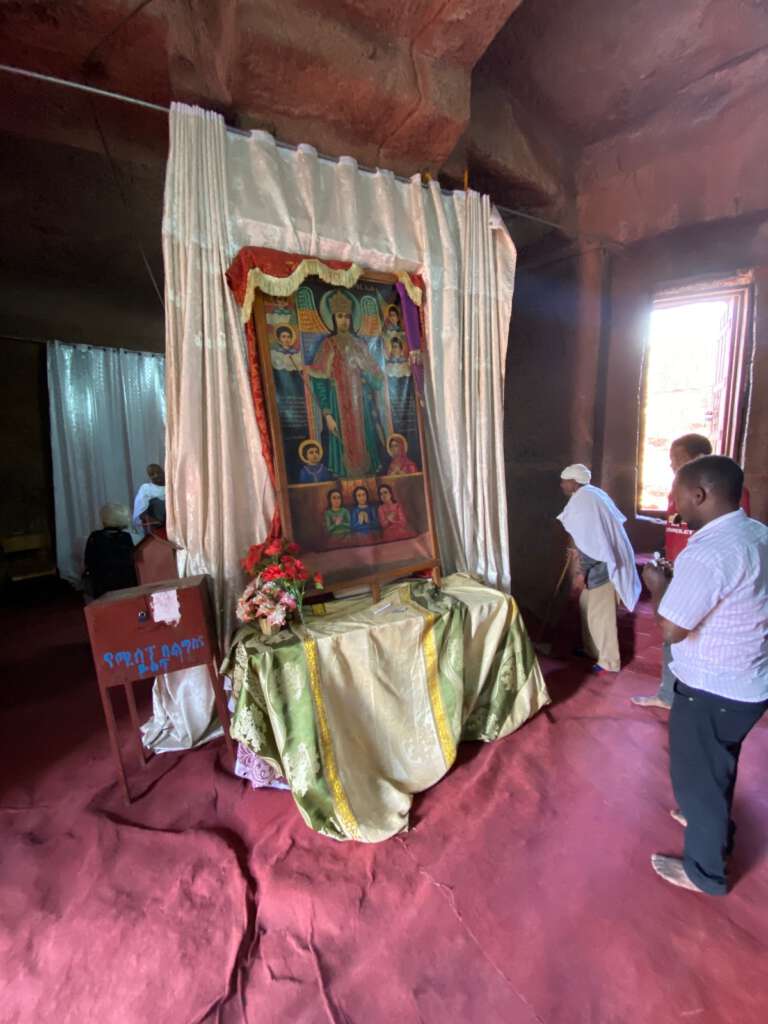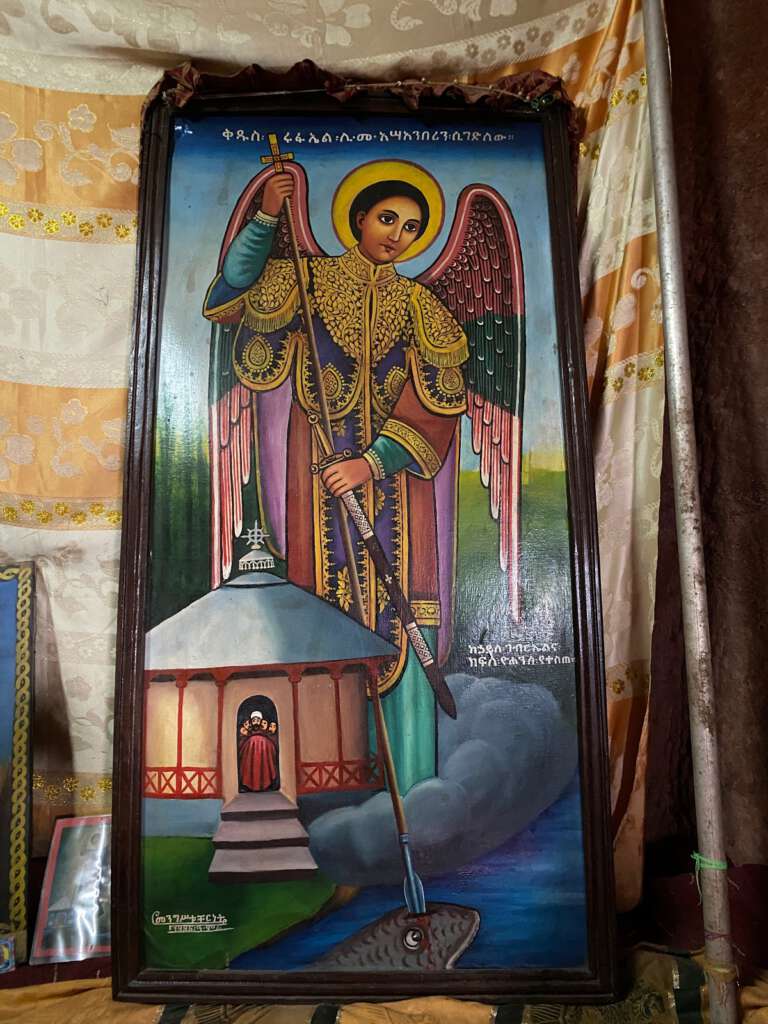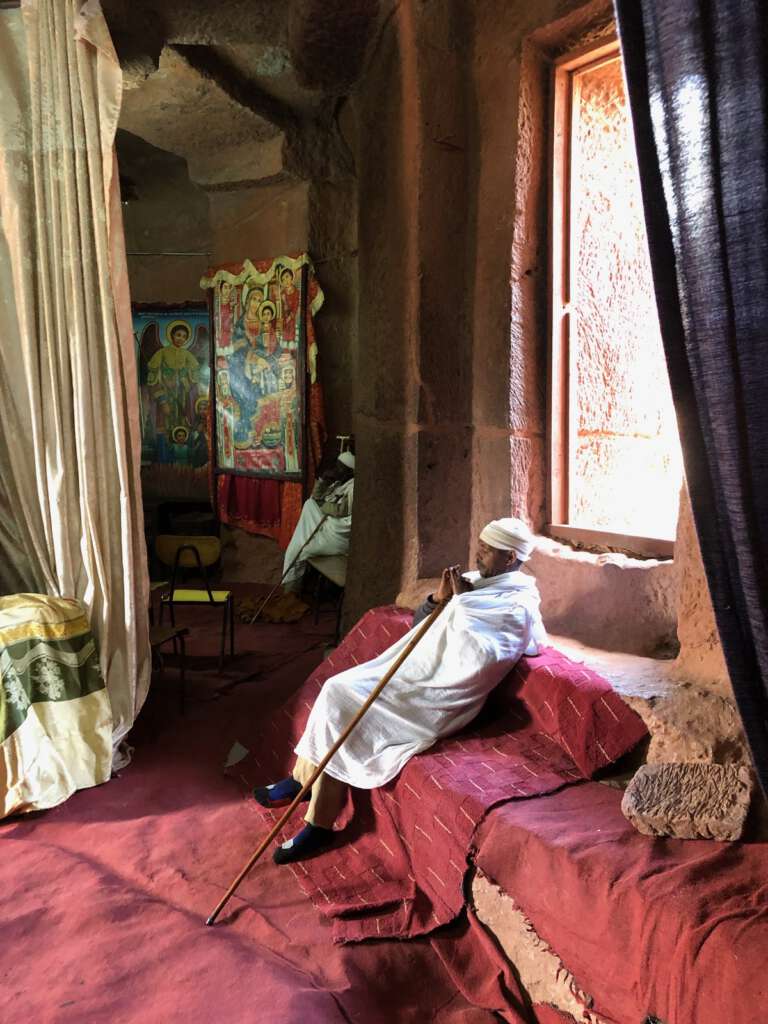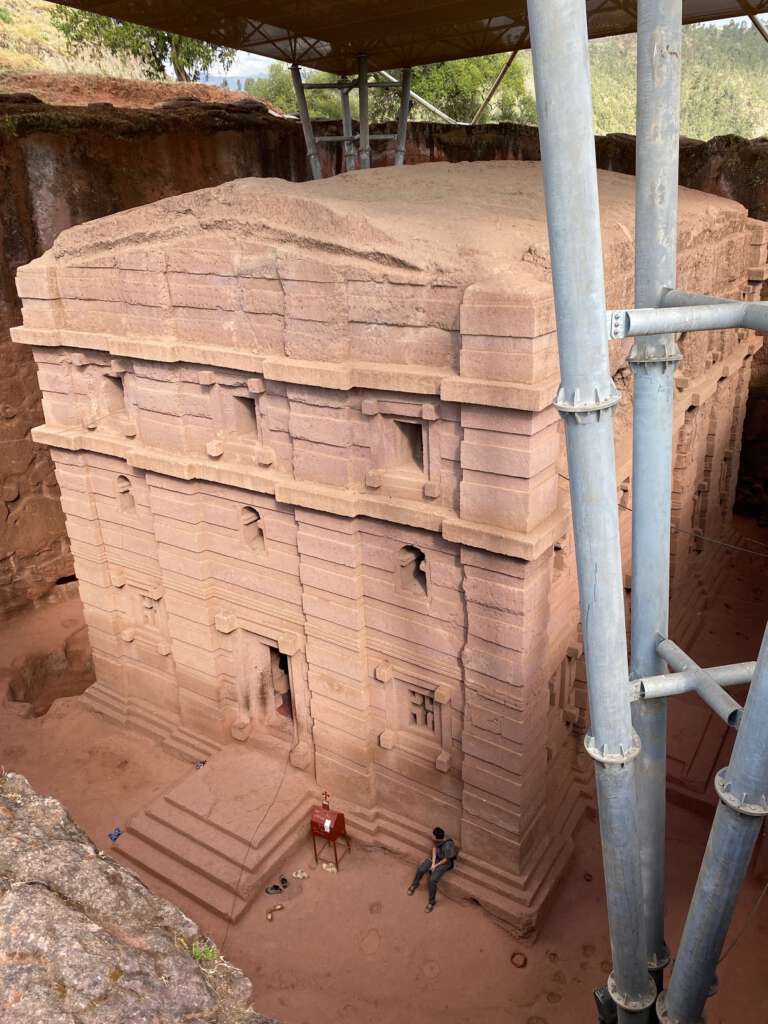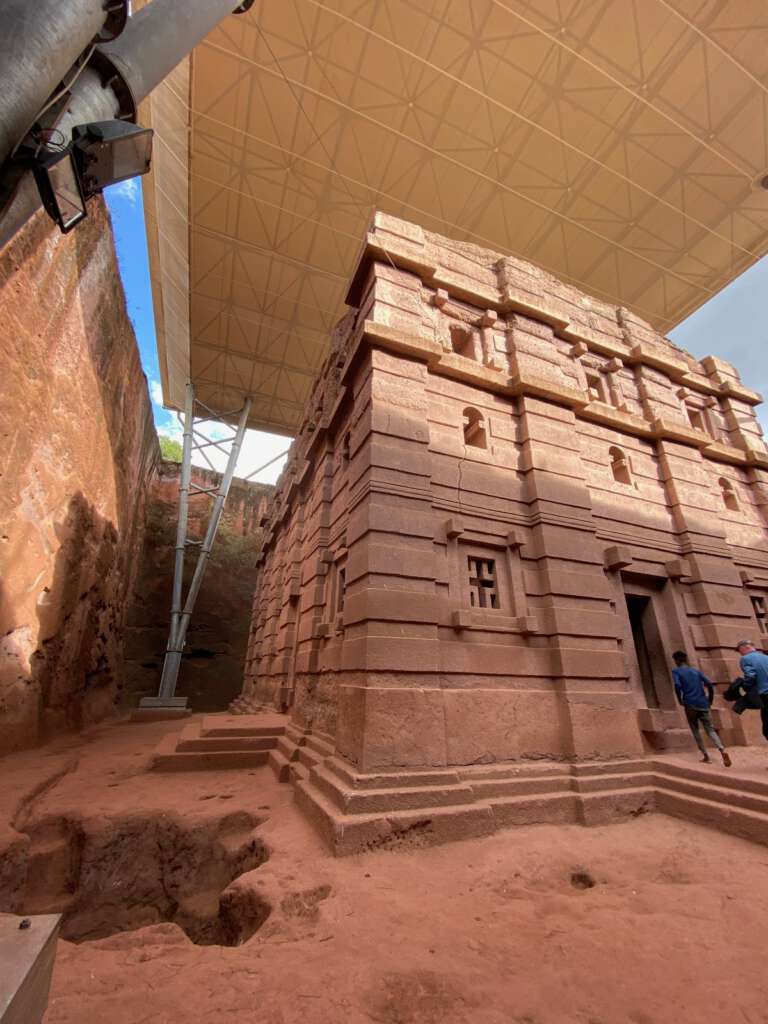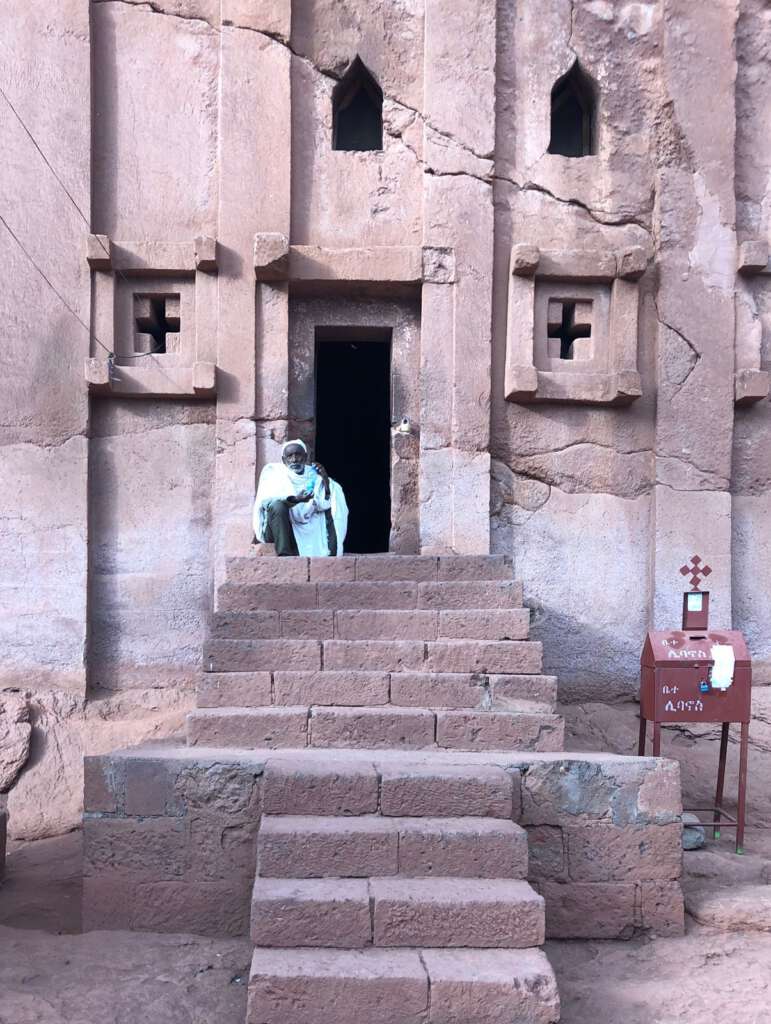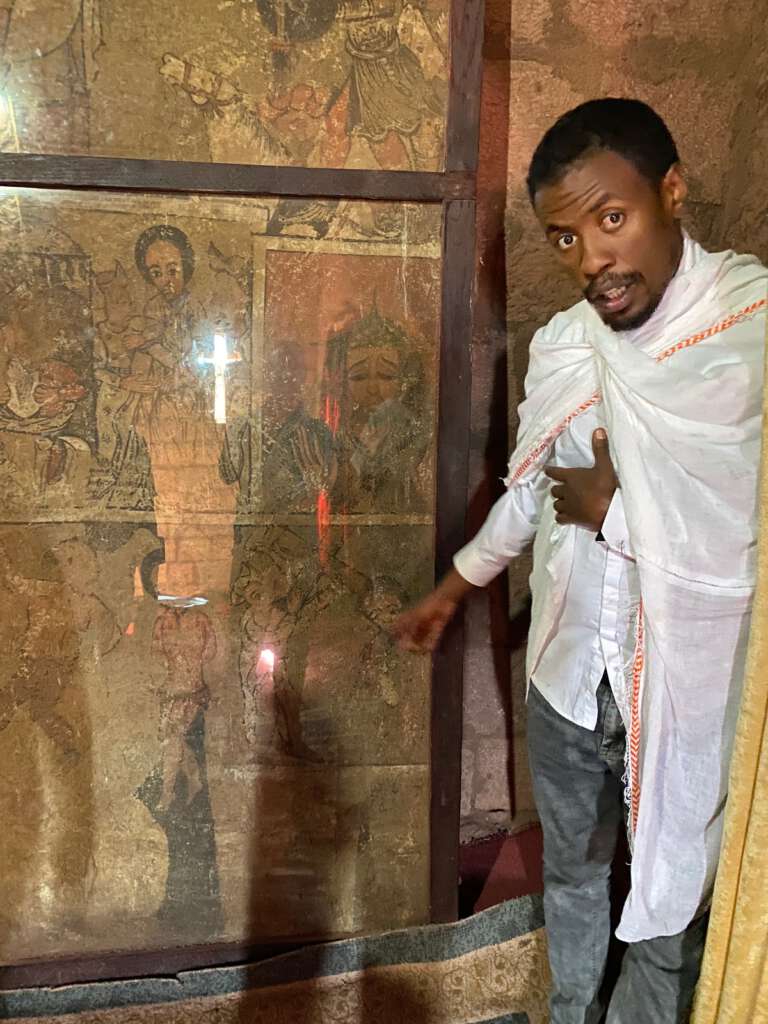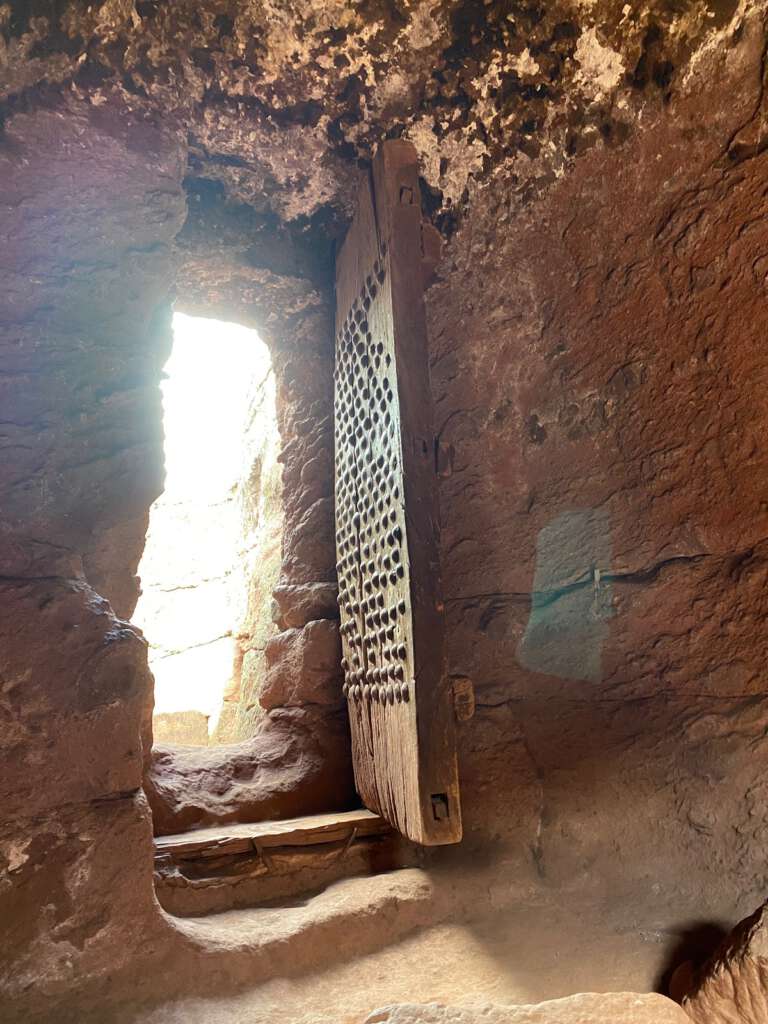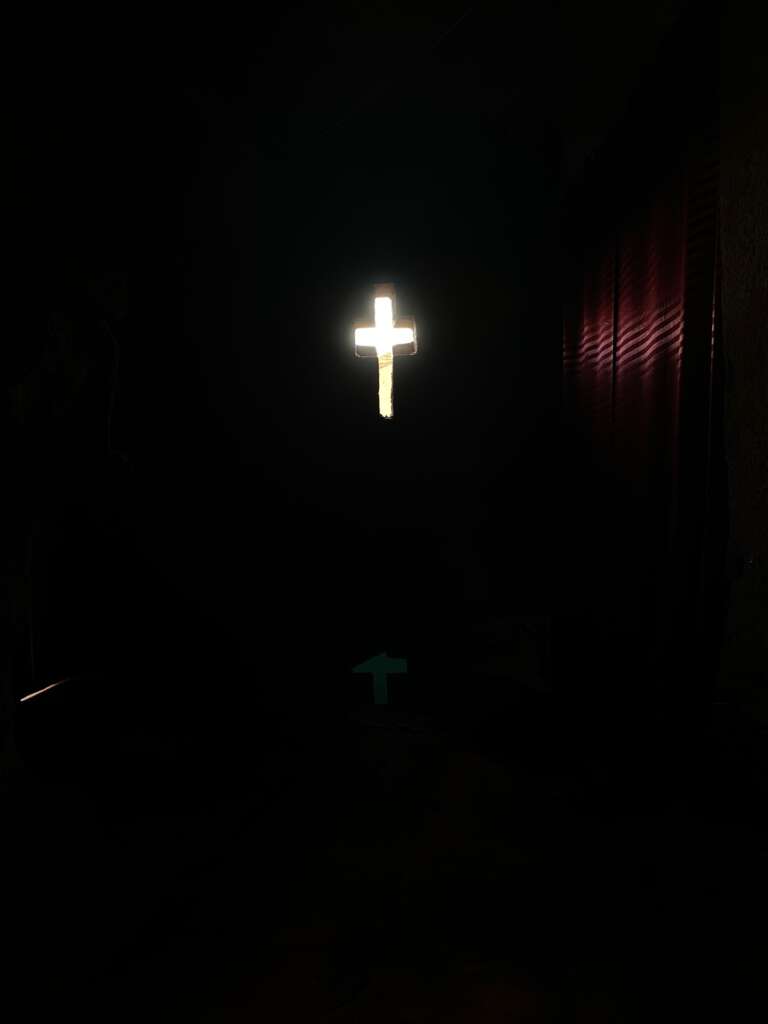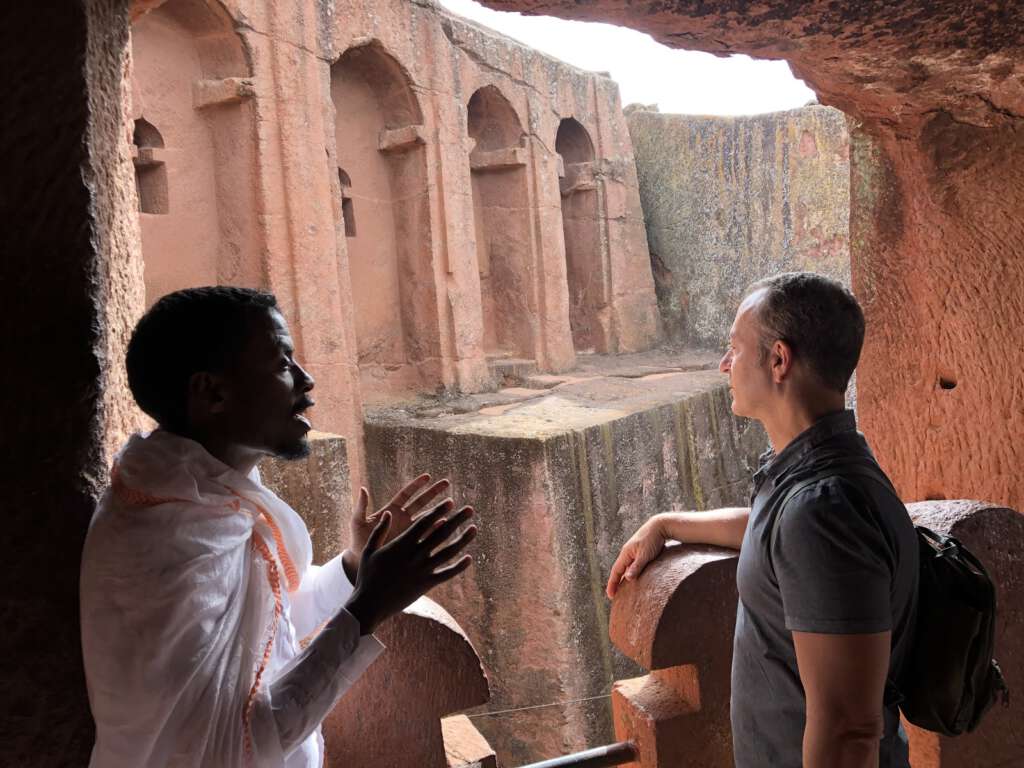
Kenya and Ethiopia – Part 9: Lalibela Rock Churches and the Amazing Market
We woke up early, had breakfast at our hotel, and then met our guide, Haliu. We rode into town in a tuk-tuk while he gave us the history of the churches.
–
There are 13 churches. They are divided into groups. There’s the northern cluster, which we were going to visit in the morning. In the afternoon, we would explore the southern cluster. We save the most iconic one, St. George, for last (the next day). Because today is Saturday, we’d get to visit the huge market in town. Tickets for the churches are 50 USD per person. Each ticket is good for five days.
Because of the number of churches we would see today, and the rich history behind each one, it would take many many blog posts to do it proper justice. I’m not going to even attempt to distinguish each individual church or try to remember the specific historical details behind each one. You really have to visit, and you have to get a guide like Hailu, who really finds the history fascinating and truly enjoys sharing it with others.
We started with Bet Medhane Alem, the most easterly church in the Northern cluster.
It’s the world’s largest rock-hewn monolith, standing up to 11 meters high and covering 800 square meters. It’s supported by 36 pillars on the inside and another 36 around the outside.
The three jointed arches at each corner are said to represent the Holy Trinity. Actually, according to Hailu, just about everything in these churches have biblical significant. The number of windows, the number of columns… they all refer back to something in the bible. Hailu knows everything about these churches and really explained things very well.
Before going inside, he showed us one of the many baptismal pools that we would see around these churches.
The interior is plain, with several abandoned graves carved into the rock floor. It looks more like a Greek temple than an Ethiopian church. Originally, the floors were left bare, but the rock floor is cold and uneven, and you can’t wear shoes or sandals inside (but you can wear socks), so eventually they added rugs to make it easier to walk around the churches, although many of the floors do remain bare. If you come to Lalibela, wear shoes and socks, not sandals. You definitely need socks on your feet while walking in these churches.
On Sunday, worshippers come hoping to be blessed or healed by the famous 7 kg gold Lalibela Cross.
A few years ago, a cover was erected over the church to protect it, and it was appreciated at first, but over the years, the residents of Lalibela have grown to dislike it, likening it to a gas station.
A short, low tunnel leads west into a larger trapezoid courtyard enclosing a trio of churches:
Bet Maryan, Bet Meskel,and Bet Danagel.
Bet Maryam is 10 m high, with a floor area of about 250 sq m, and an upper floor divided into seven rooms stacked with church treasures.
It’s dedicated to the Virgin Mary.
Above the western porch and squeezed beneath the roof is a rare and beautifully carved bas-relief of St. George fighting the dragon.
Inside, the ceilings and upper walls are painted with very early frescoes, and the columns, capital and arches are covered in beautifully carved details, including a curious two-headed eagle and two fighting bulls,one white (good) and one black (evil).
A veiled internal pillar is supposedly inscribed with the Ten Commandments in Greek and Ge’ez, as well as the story of the beginning and end of the world. You can see in the photo below, the pillar, behind the red curtain. That pillar has not been unwrapped for centuries. The local priests say that the pillar glowed brightly until the 16th century. They say it would be too dangerous to lift the veil and show it to researchers. I mentioned to Hailu that if I were the guy who sits in the church all day, I would be very tempted to unwrap it a little and take a peek, but he seemed amused and horrified by the thought.
Carved into the northern wall of Bet Maryam’s courtyard is the tiny chapel of Bet Meskel. It’s barely 35 sq me in area. Four pillars divide the gallery into two aisles spanned by arcades. In the southern wall, and even smaller, is the atmospheric chapel of Bet Danagel (House of the Virgins). It is pleasingly primitive and grotto-like. It was constructed in honor of 50 Christian maiden nuns murdered by the Toman Ruler Julian the Apostate in the 4th century. I can’t say for certain which photos in my collection definitely show these two little temples.
In the courtyard was a pool with water and lots of algae on the surface. It is believed to cure any infertile woman who is dipped into the water three times. Hailu said that women who are having trouble conceiving still come here and go into the pool.
The most westerly courtyard in the northern cluster has the twin Churches of Bet Mikael (House of Michael, aka Bet Debre Sina) and Bet Golgotha.
The interior of Bet Golgotha has seven life-size reliefs of saints carved around its walls. It’s the only church in Lalibela that women aren’t allowed to enter. Situated within Bet Golgotha is the tiny Selassie Chapel, with King Lalibela was reputedly buried, and is the holiest place in Lalibela. Again, I can’t say for certain, from my photos, which church is which. They all blend together after a while.
After the rock churches, we ventured to the market. We approached the big open space (not really a field) where the market was located.
–
It was quite a sight. Donkeys, cows, and lots of people, on blankets or in stalls, some with makeshift roofs overhead, some without, hawking everything from coffee to onions to grains to spices to clothing to honey. This is a very local market, and as tourists, we were a major anomaly garnering many stares. Fortunately, all of the stares were friendly, especially being escorted by our guide Hailu.
–
There were lots of donkeys, many of which were being bought and sold.
Lots of local kids were there.
I got some nice photos of some of the kids. Like this very cute girl.
And this striking looking boy with his colorful clothes,
There were sections of the market where you could find veggies, an area of spices, a grain area, a clothing area, and a honey area.
The most important grain, however, is teff, the grain that is used to make injera. It is the smallest grain in the world, with a size and texture of sand.
You have to sift the teff get remove twigs and dirt from the grain. There were lots of women around sifting the teff.
–
One of my best photos is of this woman sifting some teff. You can see little pieces of grain suspended in the air while she sifts.
We then came upon the honey section. Here, the honey is stored in huge colorful plastic containers.
We were staring at the honey sellers, and a guy said here, try some.
He slathered a big hunk of the raw honey on Mark’s finger.
I dipped my finger into it.
It was really fantastic.
In addition to selling huge containers of honey for local consumption, they also made little packets, for sale as snacks for the kids.
It was really an amazing market, with so much activity and such friendly people. I would have liked to stay for at least another hour, observing and chatting with the locals, but it was time for lunch. Hailu and the tuk-tuk driver drove us to Seven Olives restaurant.
The outside of the restaurant, with the trees and plants, was very inviting. Food was inexpensive; a typical main dish costing 120 birr comes to about $3.75. The food was excellent and the outdoor seating area was quiet and scenic.
Hailu left us there for lunch and said he’d pick us up in an hour, to explore the southern cluster of churches. The southern cluster consists of five churches: Bet Gabriel-Rafael, Bet Abba Libanos, Bet Lehem, Bet Emanuel and Bet Mercurios. I can’t be certain exactly which church is which, and in what order we saw them, but I’ll do my best.
We started with Bet Gabriel-Rafael.
It is surrounded by a deep trench that sometimes fills up like a moat in the rainy season, and it must be crossed on a solid concrete bridge.
From the outside it is imposing and memorable. The northern façade looks very tall because of the trench below.
Inside is small and plain, decorated only by three carved Latin crosses.
There are four other churches in this group. I can’t say which church is which anymore. I’m just going to post some interesting photos of the churches in this cluster.
Bet Abba Libanos: It has been built around a cave in a vertical face. The roof is still connected to the original rock, but the sides and back are separated by narrow tunnels. The interior is most notable for a small light in the altar wall which, according to the priests, shines of its own accord 24 hours a day. The carved corners of its cubic capitals represent angel eyes.
Bet Lehem: A tunnel of about 50 m in length leads from the right aisle of Bet Abba Libanos to Bet Lehem (House of Bread), a small and simple chapel.
Bet Emanuel: It is 12 m high and is the only full monolith in the southern cluster. People say it’s the finest and most precisely carved church in Lalibela. Set in a deep courtyard. An ornamental frieze of blind windows above the nave dominates the church’s interior and is the most striking feature.
To get from Bet Gabriel-Rafael to Bet Mercurios requires that you walk through a 35 meter long pitch-black tunnel. The tunnel is said to represent hell, and according to local tradition, you should walk it without any light. I did that, and took a film of this little adventure.
The churches in this cluster were just as amazing as those in the northern cluster. In the courtyard between these churches, there were some musicians playing some holy music.
–
After viewing all of the churches, we emerged and walked to the nearby hill top, and then walked all the way down the hill back to the center of town.
For dinner, we headed back to Ben Abeba to catch the sunset once again, and enjoy the stunning views.

